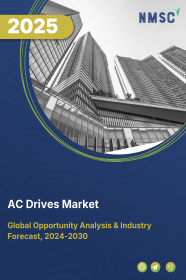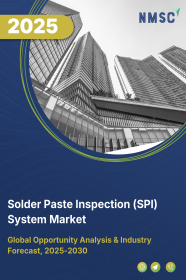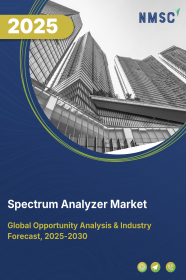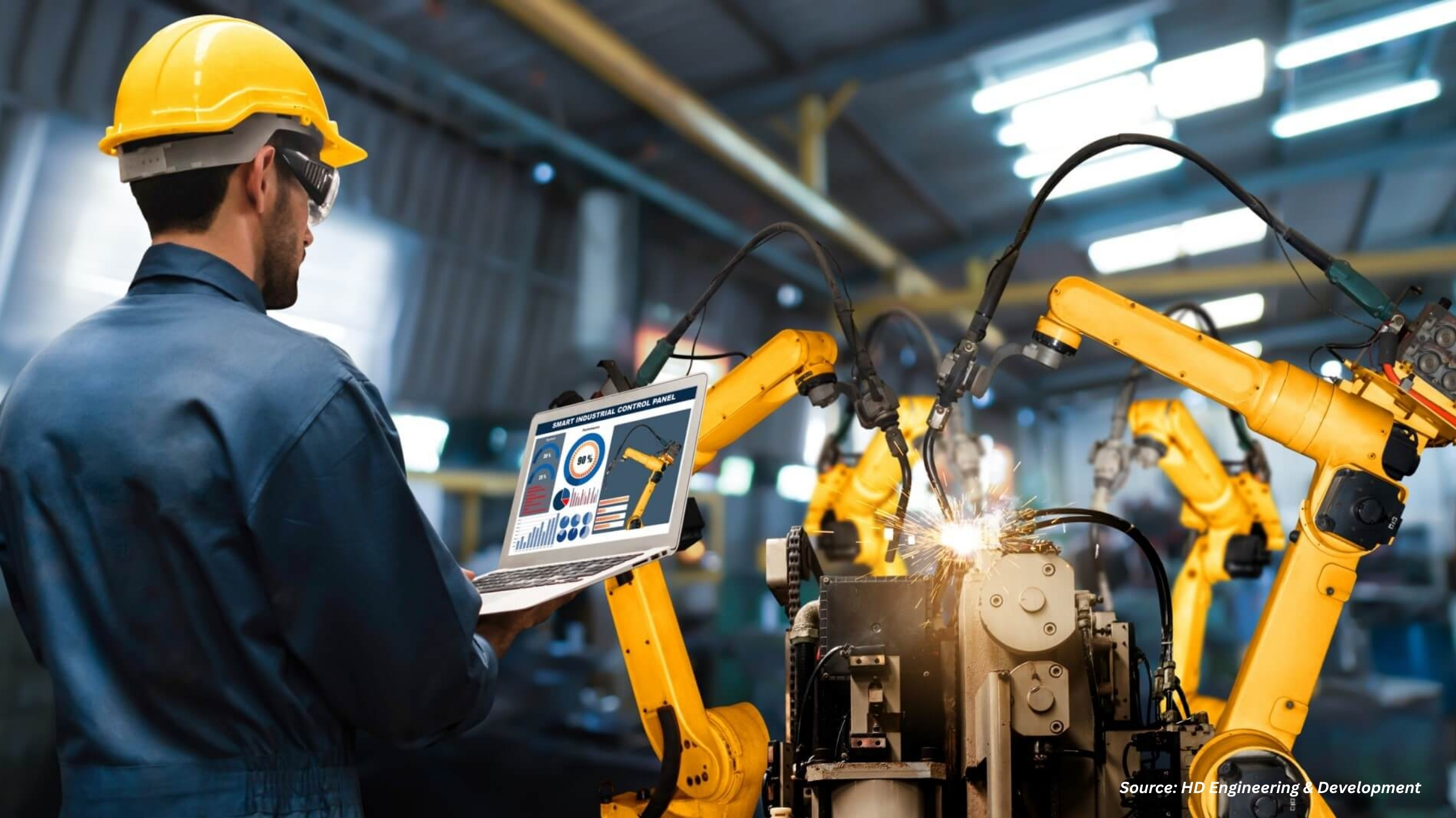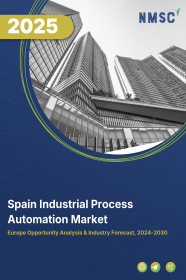
Spain Industrial Process Automation Market by Component {MES (Hardware, Software, Services); DCS (Hardware, Software, Services); PLC (Hardware, Software, Services); SCADA (Hardware, Software, Services); Field Instruments; Industrial Robots; Human Machine Interface; Industrial PCs; Process Analyzers & Drives} and by End User (Oil & Gas, Chemicals & Refining, Energy & Power, Pulp & Paper, Metals & Mining, Pharma, & Others) – Global Opportunity Analysis and Industry Forecast, 2025–2030
Industry: Semiconductor & Electronics | Publish Date: 10-Nov-2025 | No of Pages: 125 | No. of Tables: 121 | No. of Figures: 66 | Format: PDF | Report Code : SE992
Industry Outlook
The Spain Industrial Process Automation Market size was valued at USD 1.18 billion in 2024 and is projected to grow to USD 1.27 billion by 2025. Additionally, the industry is expected to continue its growth trajectory, reaching USD 1.62 billion by 2030, at a CAGR of 5.34% from 2025 to 2030.
The expansion of Spain’s energy and power sector, particularly with the growing integration of renewable energy sources, is fueling demand for the industrial process automation market to ensure efficiency, safety, and optimized resource management, while the paper and packaging industry is also increasingly adopting automation to enhance production speed, maintain product quality, and reduce operational costs.
However, strict regulatory and compliance requirements create challenges, delaying implementation and increasing costs, thereby slowing broader adoption. At the same time, the integration of artificial intelligence (AI) and machine learning (ML) offers significant opportunities, enabling predictive maintenance, real-time monitoring, and advanced analytics that strengthen decision-making, improve efficiency, and enhance operational resilience across industries.
Expansion of the Energy and Power Sector Fuels Automation Demand
The expansion of Spain’s energy and power sector is accelerating the adoption of industrial process automation due to the need for greater efficiency, safety, and effective resource management. As the country increasingly relies on renewable energy sources such as solar and wind, automation becomes vital for integrating diverse energy systems, managing fluctuating power supply, and optimizing resource usage. Automated systems enable seamless grid operations and predictive maintenance, ensuring improved stability and sustainability in the energy transition.
Rising Paper Industry Boosts Automation Market Expansion
The rising paper and packaging industry in Spain further drives the Spain industrial process automation market demand. Companies are under pressure to meet growing consumer and industrial demand while maintaining cost efficiency and product quality. Automation technologies enhance production line efficiency, increase output speed, and ensure consistent quality in paper and packaging materials. This trend underscores the sector’s growing reliance on automation to improve productivity, streamline workflows, and reduce operational costs while staying competitive.
Regulatory and Compliance Challenges Hinder Market Growth
Strict regulatory frameworks and compliance requirements in Spain create hurdles for automation adoption. Businesses are required to modify or upgrade their systems to meet evolving industry standards, which delays implementation timelines and increases costs. Navigating these complex compliance demands slow the pace of growth and discourage some firms from investing in advanced automation technologies.
Integration of AI and Machine Learning Enhances Industrial Efficiency
The integration of artificial intelligence (AI) and machine learning (ML) presents a strong opportunity for the Spanish industrial process automation market. These technologies enable real-time monitoring, predictive maintenance, and advanced analytics that improve decision-making, reduce downtime, and enhance resource optimization. By adopting AI- and ML-driven solutions, industries such as energy, power, and paper achieve higher efficiency, smarter production processes, and greater operational resilience.
Competitive Landscape
The promising players operating in the Spain industrial process automation industry include Siemens AG, Mitsubishi Electric Corporation, Schneider Electric SE, Honeywell International Inc., ABB Ltd., Toshiba Corporation, Emerson Electric Co., Rockwell Automation Inc., Omron Corporation, Valmet Oyj, Yokogawa Electric Corporation, Endress+Hauser, Dwyer Instruments Inc., Fanuc Corporation, and Hitachi, Ltd., and others.
Spain Industrial Process Automation Market Key Segments
By Component
-
Manufacturing Execution Systems (MES)
-
Hardware
-
Software
-
Services
-
-
Distributed Control Systems (DCS)
-
Hardware
-
Software
-
Services
-
-
Programmable Logic Control (PLC)
-
Hardware
-
Software
-
Services
-
-
Supervisory Control and Data Acquisition (SCADA)
-
Hardware
-
Software
-
Services
-
-
Field Instruments
-
Industrial Robots
-
Human Machine Interface (HMI)
-
Industrial PCs
-
Process Analyzers and Drives
By End User
-
Oil and Gas
-
Chemicals and Refining
-
Energy and Power
-
Pulp and Paper
-
Metals and Mining
-
Pharma
-
Cement & Glass
-
Others
Key Players
-
Siemens AG
-
Mitsubishi Electric Corporation
-
Schneider Electric SE
-
Honeywell International Inc.
-
ABB Ltd.
-
Toshiba Corporation
-
Emerson Electric Co.
-
Rockwell Automation, Inc.
-
Omron Corporation
-
Valmet Oyj
-
Yokogawa Electric Corporation
-
Endress+Hauser AG
-
Dwyer Instruments Inc.
-
Fanuc Corporation
-
Hitachi, Ltd.
Report Scope and Segmentation
|
Parameters |
Details |
|
Market Size Value in 2025 |
USD 1.27 Billion |
|
Revenue Forecast in 2030 |
USD 1.62 Billion |
|
Value Growth Rate |
CAGR of 5.34 %from 2025 to 2030 |
|
Analysis Period |
2024–2030 |
|
Base Year Considered |
2024 |
|
Forecast Period |
2025–2030 |
|
Market Size Estimation |
Billion (USD) |
|
Growth Factors |
|
|
Companies Profiled |
15 |
|
Market Share |
Available for 10 companies |
|
Customization Scope |
Free customization (equivalent to up to 80 working hours of analysts) after purchase. Addition or alteration to country, regional, and segment scope. |
|
Pricing and Purchase Options |
Avail customized purchase options to meet your exact research needs. |

















 Speak to Our Analyst
Speak to Our Analyst



